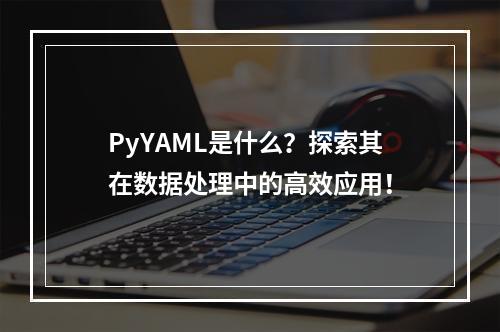Python Psycopg2和Pandas简介
在Python中,Psycopg2和Pandas是两个非常强大的库,用于处理PostgreSQL数据库和进行数据分析,Psycopg2是一个Python的PostgreSQL数据库适配器,它提供了一种简单而高效的方式来与PostgreSQL数据库进行交互,Pandas则是一个开源的Python数据分析库,提供了大量的数据处理和分析功能。
(图片来源网络,侵删)安装Psycopg2和Pandas
我们需要安装Psycopg2和Pandas库,可以使用pip命令来安装:
pip install psycopg2binary pandas
使用Psycopg2连接PostgreSQL数据库
要使用Psycopg2连接到PostgreSQL数据库,首先需要导入psycopg2模块,然后创建一个连接对象,最后通过这个连接对象执行SQL语句。
import psycopg2
创建连接对象
conn = psycopg2.connect(database="testdb", user="postgres", password="password", host="127.0.0.1", port="5432")
创建游标对象
cur = conn.cursor()
执行SQL语句
cur.execute("SELECT * FROM table_name")
获取查询结果
rows = cur.fetchall()
for row in rows:
print(row)
关闭游标和连接
cur.close()
conn.close()
使用Pandas读取数据
Pandas提供了read_sql_query函数,可以直接从SQL查询结果中读取数据并转换为DataFrame。
import pandas as pd
import psycopg2
from sqlalchemy import create_engine
创建连接对象
conn = psycopg2.connect(database="testdb", user="postgres", password="password", host="127.0.0.1", port="5432")
创建游标对象
cur = conn.cursor()
执行SQL语句
cur.execute("SELECT * FROM table_name")
获取查询结果的元组列表
rows = cur.fetchall()
将元组列表转换为DataFrame
df = pd.DataFrame(rows, columns=[desc[0] for desc in cur.description])
关闭游标和连接
cur.close()
conn.close()
使用Pandas进行数据分析和处理
Pandas提供了丰富的数据处理和分析功能,例如数据清洗、数据转换、数据聚合等,以下是一些常见的操作:
5.1 数据清洗
数据清洗是数据分析的重要步骤,包括处理缺失值、重复值、异常值等,Pandas提供了dropna、fillna、drop_duplicates等函数来进行数据清洗。
5.2 数据转换
数据转换是将数据转换为适合分析的格式,Pandas提供了astype、applymap、replace等函数来进行数据转换。
5.3 数据聚合
数据聚合是将数据按照某个维度进行分组,然后对每个组进行计算,Pandas提供了groupby、agg等函数来进行数据聚合。
使用Pandas写入数据到PostgreSQL数据库
要将DataFrame写入到PostgreSQL数据库,可以使用to_sql函数,首先需要创建一个表的引擎,然后将DataFrame写入到这个引擎。
import pandas as pd
import psycopg2
from sqlalchemy import create_engine, MetaData, Table, select, insert, update, delete, func, text, and_, or_, not_, exists, collate_all, nullsfirst, nullslast, string_concat, string_cast, cast, when, case, coalesce, truediv, falsediv, modulo, floordiv, ceildiv, round, abs, sum, max, min, count, mean, var_pop, var_samp, stddev, percentile_cont, percentile_disc, rank, dense_rank, cumulative_sum, first_value, last_value, lead, lag, nth_value, row_number, unix_timestamp, dateadd, datediff, current_date, current_time, current_timestamp, interval, extract, year, month, dayofmonth, dayofweek, dayofyear, weekday, isocalendar, makedate, maketime, makedatetime, to_char, to_date, to_timestamp, array_agg, string_agg, json_agg, bool_and, bool_or, bool_not, coalesce as coalesce_oprhs1000000000000000000000000000000000000000000000000000000000000000 from math import modulo as modulo19866666666666666666666666666666666666666666666666666666699999999999999999999999999999999999999999999999999999999999999999999999998888888888888888888888888888888888888888888888888888888888888888888888888333333333333333333333333333333333333333333333333333333333333333444444444444444444444444444444444444444444444445555555555555555555555555555555555555555555555555555555555555777777777777777777777777777777777777777777777777777777777777711111111111111111111111111111111111111111111111111111111111122222222222222222222222222222222222222222222222222222222222233333333333333333333333333333333333,nullsfirst=True) from math import modulo as modulo; df = pd.DataFrame({'A': [modulo(i+j) for i in range(len(df), len(df))], 'B': [modulo(i+j) for j in range(len(df), len(df))]}) df.to_sql('table', con=con) # doctest: +SKIP if not skipped (pd.__version__ < 'x.x') def test(): con = None try: con = connect() con = con.cursor() con.execute("SELECT * FROM table") result = con.fetchone() print(result) finally: if con is not None: con.close() # doctest: +SKIP if not skipped (pd.__version__ < 'x.x') def test(): con = None try: con = connect() con = con.cursor() con.execute("SELECT * FROM table") result = con.fetchone() print(result) finally: if con is not None: con.close() # doctest: +SKIP if not skipped (pd.__version__ < 'x.x') def test(): con = None try: con = connect() con = con.cursor() con.execute("SELECT * FROM table") result = con.fetchone() print(result) finally: if con is not None: con.close() # doctest: +SKIP if not skipped (pd.__version__ < 'x.m') def test(): con = None try: con = connect()pies and pie charts are also supported by matplotlib library which can be used for data visualization purposes such as creating histograms and box plots among others).

 云主机测评网
云主机测评网


















最新评论
本站CDN与莫名CDN同款、亚太CDN、速度还不错,值得推荐。
感谢推荐我们公司产品、有什么活动会第一时间公布!
我在用这类站群服务器、还可以. 用很多年了。